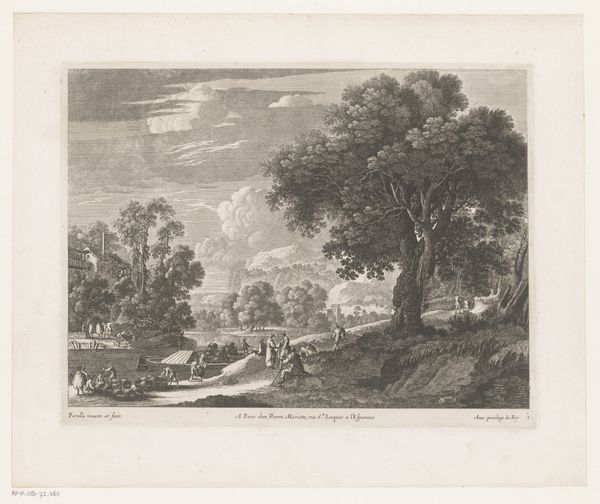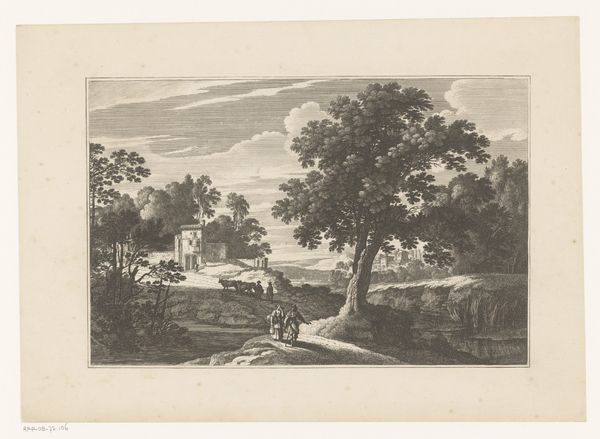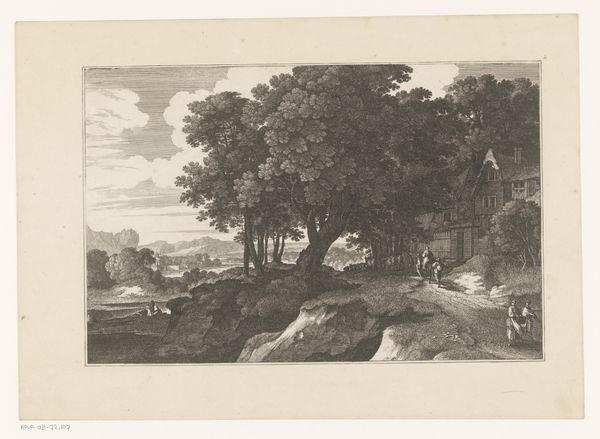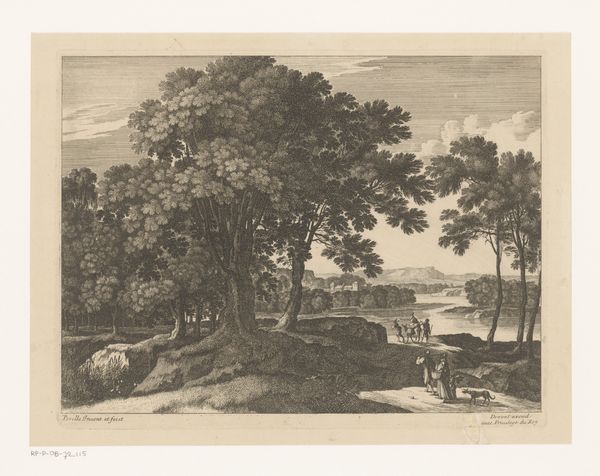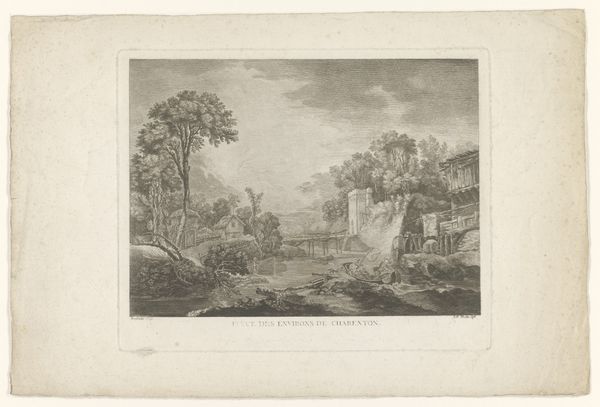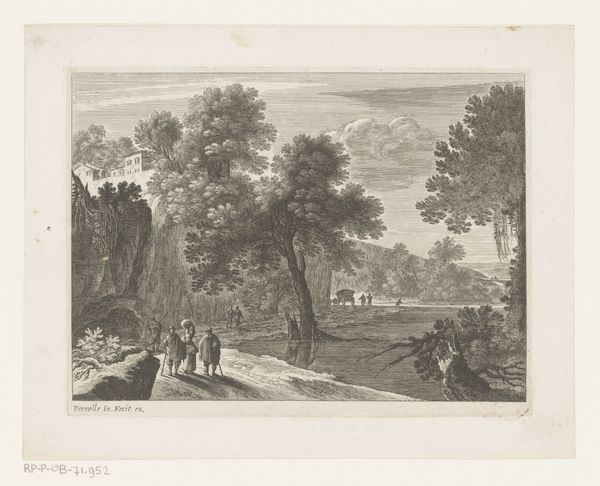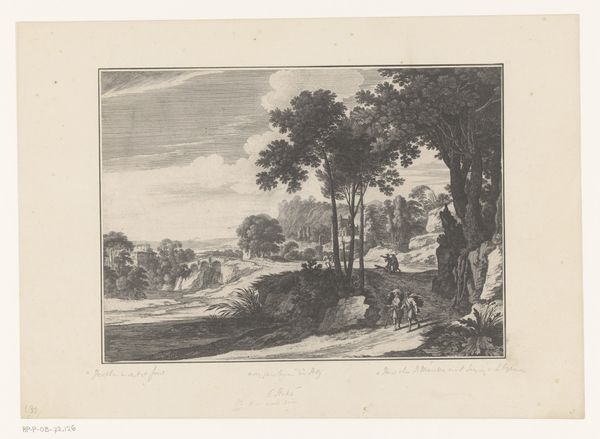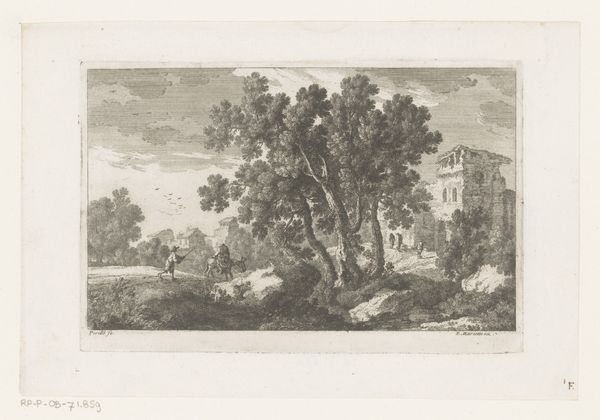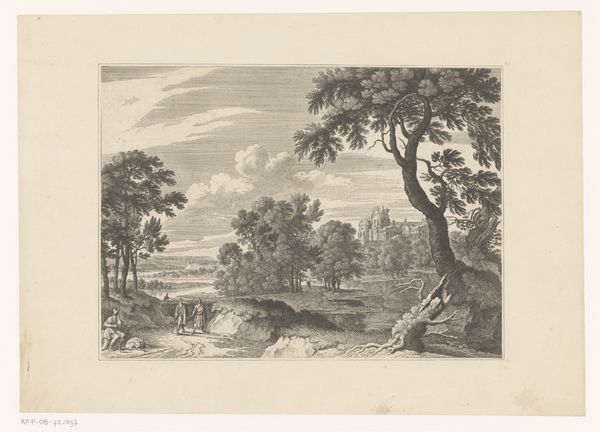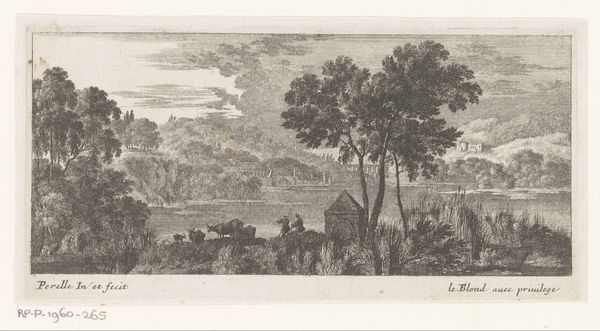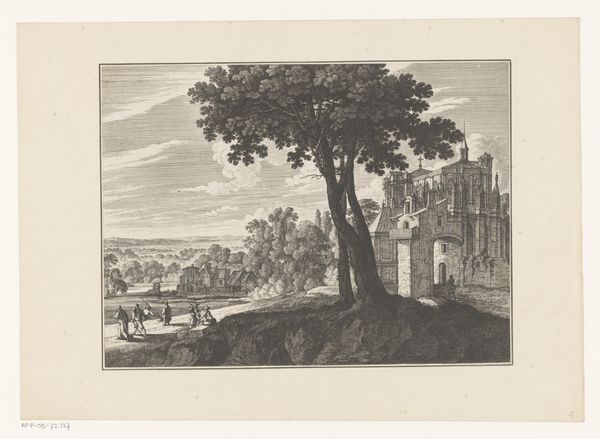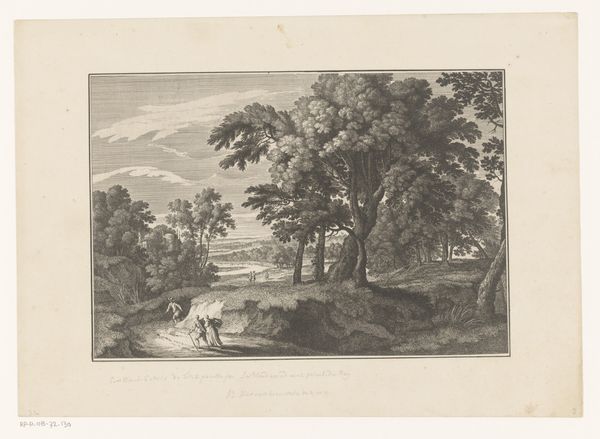
print, etching, paper, engraving
#
baroque
# print
#
etching
#
old engraving style
#
landscape
#
paper
#
form
#
line
#
cityscape
#
genre-painting
#
history-painting
#
academic-art
#
engraving
Dimensions: height 220 mm, width 300 mm
Copyright: Rijks Museum: Open Domain
Editor: So, here we have Nicolas Perelle's "Landschap met figuren voor villa," a print made sometime between 1613 and 1695. It's remarkably detailed, considering it's just lines etched into paper. I'm really drawn to the sense of idealized serenity, the balance between nature and civilization. What do you see in this piece? Curator: The image is an intriguing record of the dialogue between architectural aspiration and the landscape's inherent power. Note how the villa, presumably a space of cultivated order, is positioned quite distinctly beside the wilder elements. What cultural memories do you think a landscape like this might evoke? Editor: Well, it feels like a classical scene, like something from a story about wealthy landowners and beautiful, controlled nature. Is there more to it than that initial feeling of order? Curator: Consider the power of symbols within landscapes. The figures near the villa hint at genre painting traditions – snapshots of everyday life made monumental. Also the villa, not merely a residence, but a symbol of ambition, status, perhaps even a reaching towards a kind of immortality through legacy. Does that reading alter your sense of "serenity?" Editor: Yes, definitely. The "serenity" I felt before seems a bit naive now. It’s like the artist is showing the idyllic facade, while also subtly reminding us about power dynamics and maybe the human desire for legacy. Curator: Exactly! Every line, every placement has meaning. Think about the act of placing this scene on paper as a print, meant for circulation. What lasting impressions was Perelle aiming to achieve in his audience? Editor: I hadn’t considered that – its purpose as a reproducible image adds a whole other layer. I guess it's about conveying a certain image of ideal life. Curator: Precisely. By grasping these symbols, we learn about not only the creator’s intent but the era’s desires, anxieties and dreams. This approach transforms our looking into genuine seeing.
Comments
No comments
Be the first to comment and join the conversation on the ultimate creative platform.

